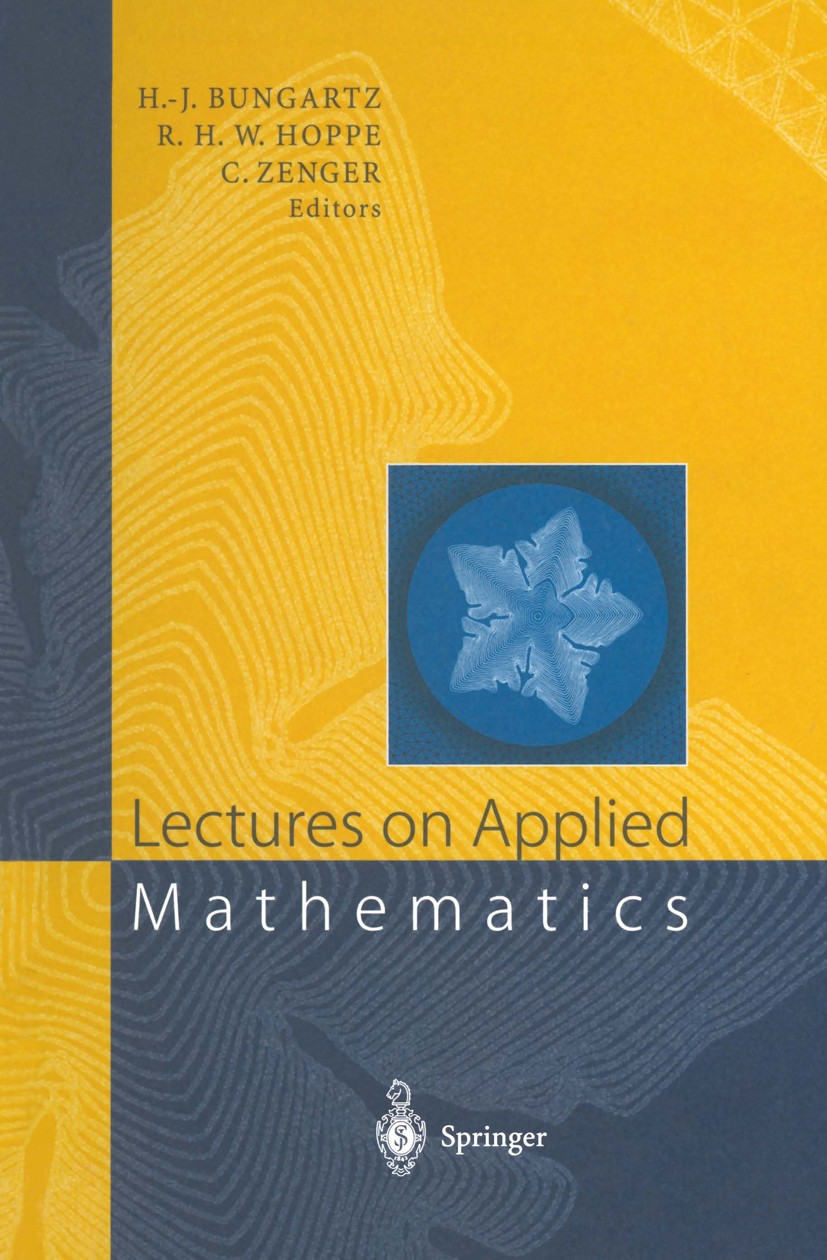| 书目名称 | Lectures on Applied Mathematics | | 副标题 | Proceedings of the S | | 编辑 | Hans-Joachim Bungartz,Ronald H. W. Hoppe,Christoph | | 视频video | http://file.papertrans.cn/584/583478/583478.mp4 | | 概述 | Interdisciplinary book on current topic in the intersection of mathematics and material science | | 图书封面 |  | | 描述 | When the DFG (Deutsche Forschungsgemeinschaft) launched its collabora tive research centre or SFB (Sonderforschungsbereich) 438 "Mathematical Modelling, Simulation, and Verification in Material-Oriented Processes and Intelligent Systems" in July 1997 at the Technische Vniversitat Munchen and at the Vniversitat Augsburg, southern Bavaria got its second nucleus of the still young discipline scientific computing. Whereas the first and older one, FORTWIHR, the Bavarian Consortium for High Performance Scientific Com puting, had put its main emphasis on the supercomputing aspect, this new initiative was now expected to focus on the mathematical part. Consequently, throughout all of the five main research topics (A) adaptive materials and thin layers, (B) adaptive materials in medicine, (C) robotics, aeronautics, and automobile technology, (D) microstructured devices and systems, and (E) transport processes in flows, mathematical aspects play a predominant role. The formation of the SFB 438 and its scientific program are inextricably linked with the name of Karl-Heinz Hoffmann. As full professor for applied mathematics in Augsburg (1981-1991) and in Munchen (since 1992) and as dean of t | | 出版日期 | Conference proceedings 2000 | | 关键词 | Transformation; linear algebra; model; modeling; scientific computing; simulation; verification | | 版次 | 1 | | doi | https://doi.org/10.1007/978-3-642-59709-1 | | isbn_softcover | 978-3-642-64094-0 | | isbn_ebook | 978-3-642-59709-1 | | copyright | Springer-Verlag Berlin Heidelberg 2000 |
The information of publication is updating

|
|
 |Archiver|手机版|小黑屋|
派博传思国际
( 京公网安备110108008328)
GMT+8, 2025-12-27 17:57
|Archiver|手机版|小黑屋|
派博传思国际
( 京公网安备110108008328)
GMT+8, 2025-12-27 17:57


